The Reasoning section is one of the most important parts of the IBPS PO exam, testing a candidate’s logical thinking, analytical ability, and decision-making skills under time pressure. Questions are often designed to challenge your pattern recognition, critical reasoning, and problem-solving approach. To help you prepare efficiently, we’ve compiled a list of commonly asked IBPS PO Reasoning questions along with detailed solutions that reflect the actual exam level.
IBPS PO Reasoning
In the IBPS PO exam, the reasoning section carries significant weight, especially in the Preliminary round, where it typically includes topics like puzzles, seating arrangements, syllogisms, coding-decoding, inequalities, and blood relations. Success in this section depends not only on accuracy but also on time management. Practising with the right types of questions and understanding their step-by-step solutions can greatly enhance your speed and confidence during the exam.
Reasoning Questions in the IBPS PO Bank Exam
Before diving into the Reasoning questions, we must know the question formats topic-wise for the Reasoning for the IBPS PO Bank Exam. The reasoning section of the IBPS PO exam comprises a wide range of question types designed to test candidates’ logical and analytical abilities. Some common question formats include:
| Question Format | |
| Topic | Question Type |
| Seating Arrangement | Arranging individuals or objects in an order based on the given conditions, such as circular arrangement, linear arrangement, or rectangular arrangement. |
| Puzzles | Arranging elements or variables based on the given conditions to arrive at a logical solution. |
| Syllogism | Drawing logical conclusions from the statements provided using the set of rules. |
| Blood Relation | Determining the relationship between different individuals based on the information given. |
| Coding-Decoding | Deciphering the coded messages or patterns from the underlying logic. |
| Input-Output | Understand the logic behind a series of inputs and outputs to answer questions based on the pattern. |
| Direction Sense | Interpreting the directions and navigating through a given scenario or finding out the distance. |
| Logical Reasoning | Evaluate arguments, draw conclusions, and identify patterns in the given set of information. |
Solving Reasoning Questions for the IBPS PO
- Read the instructions and questions carefully: Begin by carefully reading the instructions for each question to understand the requirements.
- Analyse the questions: Break down the question into smaller components and identify the key information provided.
- Practice Time Management: Allocate time wisely to each question. Don’t spend too much time on a single question.
- Work on Accuracy and Speed: Focus on accuracy first, and speed will follow with practice.
Reasoning Question in the IBPS PO Exam with Solution
Directions (1-5): Study the following information carefully to answer the given questions.
Ten persons of a family i.e., P, Q, R, S, T, U, V, W, X and Y sit around a rectangular table in such a way that three of them sit at each of the longer side of the table and faces towards the centre and two of them sit at each of the shorter side of the table and faces away from the centre. All the information is not necessarily in the same order.
P who is father of R sits third to the right of Q’s daughter-in-law. W sits at the immediate left of Q’s father-in-law who is married with V. P is the only child of V who sits opposite to the one who sits at the immediate left of R’s wife. X is son of U who is a female member. S is paternal aunt of X and sits second to the right of Q’s only sibling. W sits only with Y who is child of U. Y is not nephew of S. R has more than one child. W is not married and sits opposite to R. R’s spouse sits on the same side with R. P’s wife sits at the immediate left of Y sibling.
Q1. How T is related to the one who sits second to the left of Q?
(a) Sister
(b) Brother
(c) Father
(d) Grand father
(e) Grand mother
Q2. Four of the following are alike in a certain way so form a group, who among the following does not belong to that group?
(a) R
(b) X
(c) U
(d) P
(e) T
Q3. How many persons sit between S and V when counted from the right of V?
(a) One
(b) Two
(c) Five
(d) Three
(e) Four
Q4. Which of the following statement is not true?
(a) S, X and Q sits together on the same side of the table
(b) Q sits opposite to P
(c) Q sits at the immediate left of X
(d) T is father-in-law of Q
(e) S sits opposite to T
Q5. How many female members are there in the family?
(a) Can’t be determined
(b) Six
(c) Seven
(d) Five
(e) Four
Directions (06-08): Answer the questions based on the information given below.
Seven persons are sitting at some distance from each other. W is sitting 4m west to X. T is sitting 2m north to S, who is sitting 4m west to Q, who is sitting 1m north to V. W is sitting 2m north to Y. Y is sitting 8m west of T.
Q06. What is the direction of X with respect to Q?
(a) North-east
(b) South-east
(c) North
(d) North-west
(e) None of these
Q07. What is the shortest distance between W and V?
(a) 13m
(b) 15m
(c) 11m
(d) 9m
(e) 8m
Q08. What is the direction of S with respect to W?
(a) North-east
(b) South-east
(c) South-west
(d) North-west
(e) None of these
Directions (09-10): Answer the questions based on the information given below. In a certain code,
A & B means A is 9m west of B.
A % B means A is 4m south of B.
A * B means A is 7m north of B.
A @ B means A is 5m east of B.
Q09. In expression ‘M&N%A%C&O*P*Q’, then Q is in which direction with respect to C?
(a) North-east
(b) South-east
(c) South-west
(d) North-west
(e) None of these
Q10. In expression ‘P&R&T@S%Q*L*M’, what is shortest distance between P and L?
(a) √178m
(b) √176m
(c) √185m
(d) √204m
(e) None of these
Q11. If it is possible to make a meaningful word from 2nd, 3rd, 5th and 6th letters of word “COMPREHENSIVE”, then which will be the 3rd letter of that meaningful word? If no such meaningful word is formed, then mark the answer as ‘Y’. If more than one meaningful word is formed, then mark the answer as ‘X’.
(a) Y
(b) O
(c) E
(d) R
(e) X
Q12. Which of the following letter will become the exact middle letter, if all the letters of the word “COPYRIGHT” are arranged in reverse alphabetical order from left to right?
(a) P
(b) H
(c) O
(d) R
(e) None of the above
Q13. If it is possible to make a meaningful word from 1st, 3rd, 4th and 6th letters of word “ANTIFLAME”, then which will be the 3rd letter of that meaningful word? If no such meaningful word is formed, then mark the answer as ‘Y’. If more than one meaningful word is formed, then mark the answer as ‘X’.
(a) Y
(b) T
(c) A
(d) I
(e) X
Q14. How many pairs of letters are there in the word “ORGANICS” which has as many letters between them in the word as they have in the alphabetical series (both in forward and backward direction)?
(a) One
(b) Two
(c) Three
(d) Four
(e) None of the above
Q15. How many pairs of letters are there in the word “PREMIUM” which has as many letters between them in the word as they have in the alphabetical series (both in forward and backward direction)?
(a) One
(b) Two
(c) Three
(d) Four
(e) None of the above
Direction (16-20): Study the following information carefully and answer the questions given below.
Eight boxes i.e., M, N, O, P, Q, R, S and T are placed one above the other. These boxes contain different dryfruits i.e., Almonds, Cashews, Raisins, Dates, Figs, Walnuts, Saffron and Apricots but not necessarily in the same order.
The box which contains Cashews is placed just above S which is not placed at bottommost position. Three boxes are placed between S and O. There are two boxes which are placed between O and T. Not more than one box is placed between T and M. Maximum one box is placed between O and M. Q is placed third above M and contains Dates. Three boxes are placed between Q and P. One box is placed between P and S which contains Apricots. More than two boxes are placed between M and R. There are three boxes placed between the box which contains Apricots and the box which contains Saffron. One box is placed between the box which contains Saffron and the box which contains Figs. N does not contain Almonds and Walnuts. M does not contain Walnuts.
Q16. Which of the following box is placed at top?
(a) T
(b) Q
(c) P
(d) N
(e) O
Q17. Which of the following statement is true?
(a) O contains Cashews
(b) Two boxes are placed between N and S
(c) R contains Walnuts
(d) S is placed just above T
(e) None is true
Q18. Which of the following box is placed second above the box which contains Almonds?
(a) Q
(b) N
(c) M
(d) P
(e) S
Q19. How many boxes are placed between the box which contains Walnuts and N?
(a) One
(b) Two
(c) Four
(d) Five
(e) Six
Q20. What is the position of O with respect to N?
(a) Just below
(b) Second below
(c) Second above
(d) Third above
(e) None of the above
Directions (21-25): Study the following alphanumeric- symbol series carefully and answer the questions accordingly.
C Z # 8 F H 9 $ 3 M O & 9 7 G Q % K X @ 4 6 J I # D T R 8 $
Q21. What should come in place of question mark in the following series?
ZF# 9M$ &G9 %@K ?
(a) JDI
(b) 4I6
(c) 6IJ
(d) 6#J
(e) None of these
Q22. How many such numbers are there in the given series which are immediately preceded or followed by a consonant?
(a) Three
(b) Four
(c) Mora than five
(d) Five
(e) None of these
Q23. If all the symbols are dropped from the series, then which element will be fifth to the right of the one which is fourteenth from the right end of the new arrangement?
(a) G
(b) K
(c) 4
(d) X
(e) None of these
Q24. Which of the following element is 17th to the right of the one which is 24th from the right end of the given arrangement?
(a) I
(b) J
(c) #
(d) T
(e) None of these
Q25. How many such symbols are there in the given series which are immediately preceded by consonant but not immediately followed by consonant?
(a) Four
(b) One
(c) Three
(d) Two
(e) None of these
| Solutions | |||||||||
| 01. | d | 02. | c | 03. | e | 04. | b | 05. | a |
| 06. | d | 07. | a | 08. | b | 09. | b | 10. | a |
| 11. | d | 12. | c | 13. | d | 14. | a | 15. | c |
| 16. | b | 17. | c | 18. | b | 19. | d | 20. | a |
| 21. | d | 22. | c | 23. | d | 24. | a | 25. | d |
Hints to Questions:
Q. 01 to 05
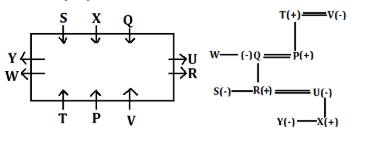
Q. 06 to 08
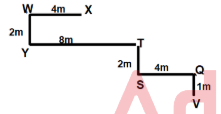
Q. 09 & 10

Q. 11. 2nd, 3rd, 5th and 6th letters of the given word are O, M, R, E respectively. So, the word ‘MORE’ is formed.
Q. 12. If the letters are arranged in reverse alphabetical order, then the word will become= “YTRPOIHGC”. So, the middle letter will be O.
Q. 13. 1st, 3rd, 4th and 6th letters of word are A, T, I, L. The meaningful word formed is ‘TAIL’. So, the 3rd letter is I.
Q. 14. 
Q. 15. 
Q. 16 to 20
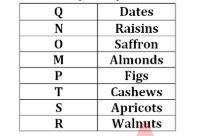
Q. 21 to 25
S21. Ans.(d)
Sol. Given series – C Z # 8 F H 9 $ 3 M O & 9 7 G Q % K X @ 4 6 J I # D T R 8 $
Therefore, option (d) is the correct answer.
S22. Ans.(c)
Sol. Given Series – C Z # 8 F H 9 $ 3 M O & 9 7 G Q % K X @ 4 6 J I # D T R 8 $
Therefore, option c is the correct answer.
S23. Ans.(d)
Sol. Given Series – C Z # 8 F H 9 $ 3 M O & 9 7 G Q % K X @ 4 6 J I # D T R 8 $
After dropping symbols – C Z 8 F H 9 3 M O 9 7 G Q K X 4 6 J I D T R 8
Therefore, option d is the correct answer.
S24. Ans.(a)
Sol. Given Series – C Z # 8 F H 9 $ 3 M O & 9 7 G Q % K X @ 4 6 J I # D T R 8 $
Therefore, option a) is the correct answer.
S25. Ans.(d)
Sol. Given Series – C Z # 8 F H 9 $ 3 M O & 9 7 G Q % K X @ 4 6 J I # D T R 8 $
Therefore, option d) is the correct answer.



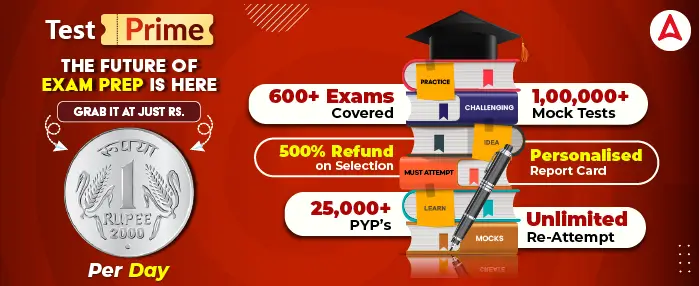
 UPSC EPFO Result 2025 Out For EO/AO &...
UPSC EPFO Result 2025 Out For EO/AO &...
 IOCL Non Executive Personnel Recruitment...
IOCL Non Executive Personnel Recruitment...
 Bank of India Credit Officer Recruitment...
Bank of India Credit Officer Recruitment...


